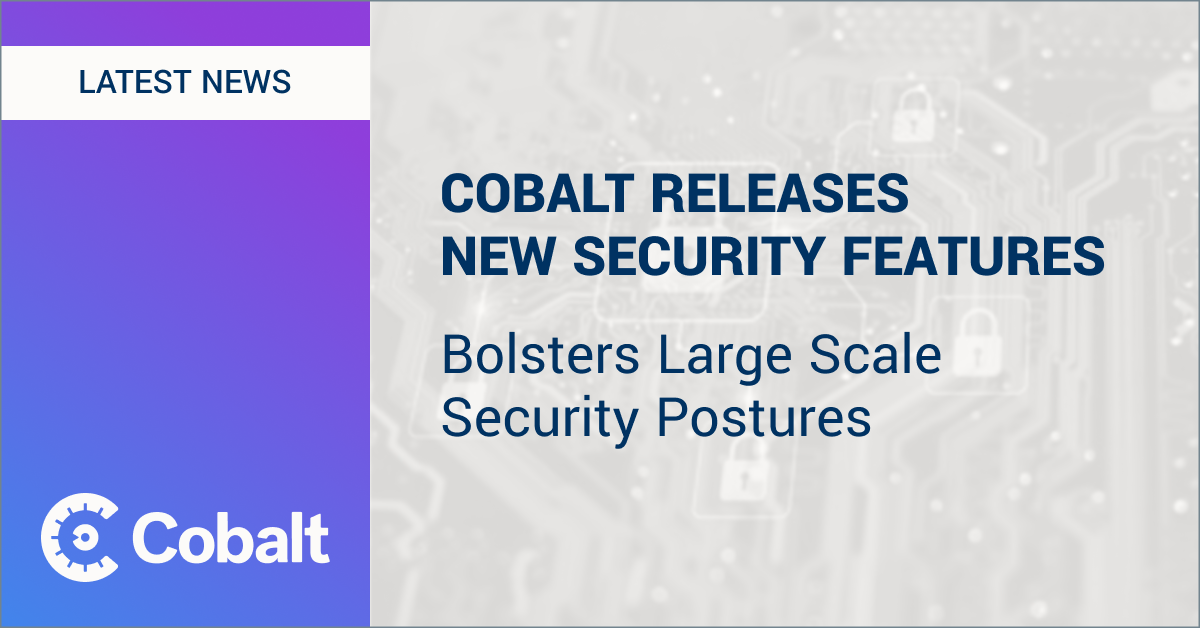Navigating the complex world of cybersecurity demands a deliberate and proactive approach. Need proof? Cybersecurity Ventures estimates that the cost of cybercrime could reach $8 trillion in 2023 and grow to $10.5 trillion by 2025.
As cyber threats become more sophisticated, the conventional defensive stances are no longer adequate. As a result, offensive security strategies, which seek to anticipate and challenge potential vulnerabilities, have emerged as a vital component of modern cybersecurity.
But mere adoption of this approach doesn't guarantee success. Such a strategy needs to be anchored by clear, measurable goals for maximum efficacy. This ensures targeted actions, efficient resource allocation, and a heightened ability to stay ahead of looming threats.
Defining an Offensive Security Strategy
An offensive security strategy aims to preemptively identify and mitigate gaps and weaknesses within an organization's digital infrastructure. It emphasizes active engagement and confrontation with potential security threats rather than just building barriers.
Some critical components of offensive security include:
- Vulnerability Assessments: Comprehensive evaluations to detect weak points across networks and software applications.
- Penetration Testing: These tests don't just identify vulnerabilities; they challenge them by actively attempting to breach an organization's defenses. This offers a real-world risk perspective.
- Red Teaming: A holistic approach to security that entails full-scale adversarial attack simulations. These exercises provide a deep dive into an organization's vulnerabilities by focusing on human, digital, and physical defenses.
A defensive security strategy, by comparison, concentrates on creating barriers against threats.
Such a strategy is necessary, but it operates from a predominantly reactive standpoint. An offensive approach provides a more comprehensive understanding of potential adversary tactics and intentions, driving proactive and informed risk mitigation.
The Imperative of Goals in an Offensive Strategy
While advanced offensive security techniques offer valuable insights, they require a clear direction to be truly effective. Each activity, whether it's a vulnerability assessment or a red teaming exercise, should be part of a broader strategic objective. Without such direction, even the most sophisticated tools and tactics risk being underutilized or misdirected.
Building a Goal-Oriented Offensive Security Plan
Crafting an offensive security strategy is more than just running a series of tests. It's about aligning those tests and measures with distinct goals that tie back to an organization's overarching mission. With these targets in place, the strategy becomes more than a defensive stance—it transforms into a proactive mission.
This alignment requires a systematic approach involving:
- Risk Assessment with Goals in Sight: Start by identifying the organization's vital assets, whether it's customer data, proprietary code, or business-critical processes. When a goal, such as "Safeguarding intellectual property," is clear, it guides the focus toward specific systems or processes that need immediate attention.
- Objective Setting for Tactical Execution: Move from broad goals to detailed, actionable objectives. If safeguarding proprietary algorithms is the aim, a tangible objective might be: "Conduct bi-weekly agile pentest on software repositories and remediate discovered vulnerabilities within 72 hours."
- Resource Allocation Driven by Objectives: With objectives clear, allocate the required resources—human and technological. For example, if the goal is frequent red teaming, ensure there's a skilled team with the necessary tools to execute and analyze these tests.
- Feedback Loop Creation: Establish mechanisms to assess the outcomes of offensive security activities. This might involve reviewing penetration test reports, gauging the success rate of red team exercises, or evaluating the time taken to rectify identified vulnerabilities.
- Continuous Training and Skill Upgrades: Ensure the team remains updated with regard to the latest threats and techniques. Regular workshops, training sessions, and certifications can help maintain a high level of competency. It's also vital to have a culture of security, so employees take this training seriously.
- Consistent Review and Refinement: As the threat landscape evolves, so should an organization's strategy. That's why it's crucial to regularly revisit goals, assess their relevance, and refine processes to keep them aligned with current threats.
With each objective tied to the broader goal, each security action and decision finds a clear purpose and direction, optimizing resource utilization and ensuring maximum protection.
Measuring the Success of an Offensive Security Program
An effective offensive security program is not just about execution but also evaluation. While having goals is essential, quantifying and measuring the achievement of those goals is what truly sets apart a strategic initiative from a mere checklist of activities.
The following are some ways of gauging the success of your offensive security endeavors.
Key Performance Indicators (KPIs)
Measuring the success of an offensive security strategy requires tangible metrics that reflect real-world progress and challenges. Specific Key Performance Indicators (KPIs) can offer insights into the operational efficiency, coverage, and adaptability of the initiative.
KPIs may include:
- Vulnerability Remediation Time: The duration taken to fix a detected vulnerability. A reduced remediation time often indicates a well-prepared and responsive security team.
- Detection Rate: The ratio of identified vulnerabilities against the total number of tests run. A high detection rate implies that the system is capable of spotting anomalies effectively.
Return on Security Investment (ROSI)
Measuring the tangible benefits of an offensive security strategy often circles back to its financial implications. Return on Security Investment (ROSI) provides a comprehensive perspective on this, enabling organizations to quantify the value delivered by their proactive security measures.
By analyzing the costs saved from potential breaches that were prevented and comparing them against the investment in security initiatives, ROSI delivers a clear picture of the financial efficiency of the strategy and helps justify any investments in cybersecurity.
Feedback from Red Teaming Exercises
Gaining feedback from red teaming exercises isn't just about gathering data but extracting actionable insights. When red team members provide their perspectives, they shed light on areas that might otherwise be overlooked. Their expertise allows them to assess the resilience of systems, gauge the effectiveness of employee responses, and pinpoint potential blind spots.
This qualitative feedback provides a holistic view, emphasizing both strengths and areas requiring enhancement.
Threat Landscape Coverage
By evaluating the array of threats your program counters, you can measure its breadth and depth. It's crucial to be equipped against common vulnerabilities, such as SQL injections or cross-site scripting. Simultaneously, remaining vigilant toward evolving threats—especially those tailored to your industry—ensures your organization remains a step ahead. This dual approach maximizes protection and minimizes the risk of surprise breaches.
Employee Training Effectiveness
The human element remains one of the most significant variables in cybersecurity. Ensuring employees can not only recognize but adequately respond to threats is worth the investment.
However, evaluating the effectiveness of training isn't limited to post-training tests. Continuous assessments, like mock drills and unplanned tests, give a more accurate picture of their readiness. Such evaluations underscore the importance of training, reinforcing its role in the broader security strategy.
Stakeholder Feedback
Cybersecurity is a collective effort, and gathering insights from diverse stakeholders helps enrich the strategy. From C-suite executives who provide a high-level view to frontline IT staff intimately familiar with day-to-day operations, their feedback can be invaluable. Such engagement identifies strategy gaps, emphasizes successful tactics, and reinforces the collaborative nature of organizational security.
Trend Analysis of Security Concerns
Continuous monitoring and trend analysis provide a dynamic view of the security landscape. By tracking patterns in detected issues and types of attempted attacks, organizations can preemptively adjust their tactics. Noticing an increase in unique challenges isn't just a call to action—it's an opportunity. By identifying these trends, organizations can refine practices, enhance specific security controls, and ensure they're constantly adapting to the ever-changing world of cybersecurity.
Quantifying the effectiveness of an offensive security strategy is a mix of hard metrics, human insights, and trend evaluations. This dynamic approach ensures the strategy remains agile, impactful, and in sync with the company's broader goals.
The Benefits of Defined Goals in Offensive Security
Every strategic move in cybersecurity, from vulnerability assessments to comprehensive penetration testing exercises, should derive its purpose from clear, overarching goals. These goals help pinpoint specific threat vectors and prioritize actions, ensuring that resources are judiciously utilized.
Pentesting as a Service (PtaaS) exemplifies goal-driven offensive security. With set goals, PtaaS helps align security endeavors with specific organizational assets or processes, delivering insights to fuel a more tailor-fitted defense.
By aligning your cybersecurity measures with your organization's key goals, you ensure a proactive, targeted approach to defense. Leveraging specialized services like those offered by Cobalt can elevate this approach, making it both adaptive and effective.
If you're ready to pursue a goal-oriented, strong offensive security strategy that meets the unique demands of your enterprise, contact Cobalt to find out more about pentesting services.




















